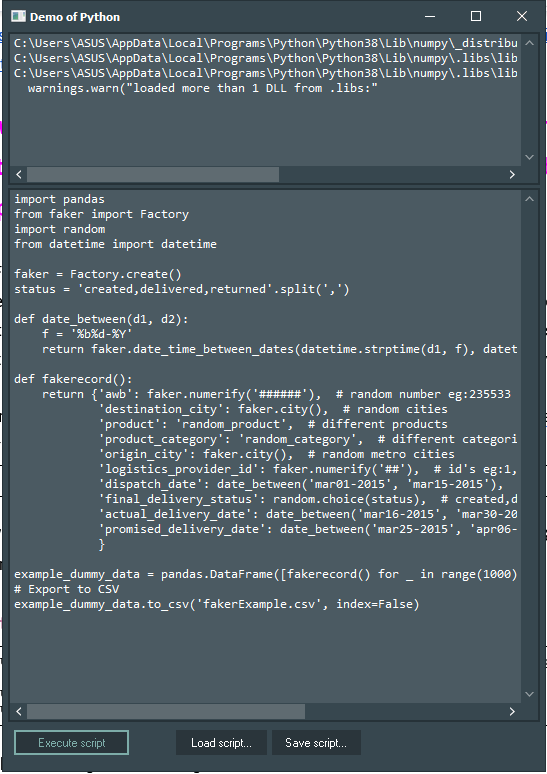

In each iteration, a row of data is added to the DataFrame and this attribute allows assigning values to each column. Pandas DataFrame.loc attribute provides access to a group of rows and columns by their label(s).data is an empty DataFrame that will later be fulfilled with data generated with Faker.x is the variable that will determine the number of iterations of the for loop where the DataFrame is created.Then, we define the create_dataframe() function, where: DataFrame () for i in tqdm ( range ( x ), desc = 'Creating DataFrame' ): data. You can create a requirements.txt file with the following content:ĭef create_dataframe ( arg ): x = int ( 60000 / num_cores ) data = pd. Realistic, simulated data for testing, development and prototypes. Make sure all the dependencies are installed before creating the Python script that will generate the data for your project. Create large volumes of meaningful test data with no. With the column-intelligent data generation, the data in one column is based on the data of another.

It provides great flexibility and manual control over the creation of the foreign key data.
Sql dummy data generator generator#
Insert the content of the DataFrame into the database Data Generator includes 200+ meaningful SQL data generators with sensible configuration options.Establish a connection to your database.All of the larger databases that I have to tune are scientific in nature - so I can usually take some other investigation as input, and rescale it and add jitter. Store generated data in a Pandas DataFrame I typically generate my own, using some known data as input - if its too random, its not always a good test I need data thats going to be distributed similarly to my final product.If you create you’re own data generator, this is the process you must follow:
Sql dummy data generator how to#
Are you using other database technologies? You can follow the guides I already published where I explain how to create your own data generator for MySQL (it could work for PostgreSQL) and MongoDB. If you choose a data generator instead, you can find one for MySQL in one of the repositories on our Percona Lab GitHub account. This library supports different formats, including CSV and JSON, and it also provides a method for inserting data into a SQL database. In the first case, if you need to process the data before inserting it into the database, you can use Pandas, a widely used Python library for data analysis. If you need test data for the database of your project, you can get a dataset from Kaggle or use a data generator.


 0 kommentar(er)
0 kommentar(er)
